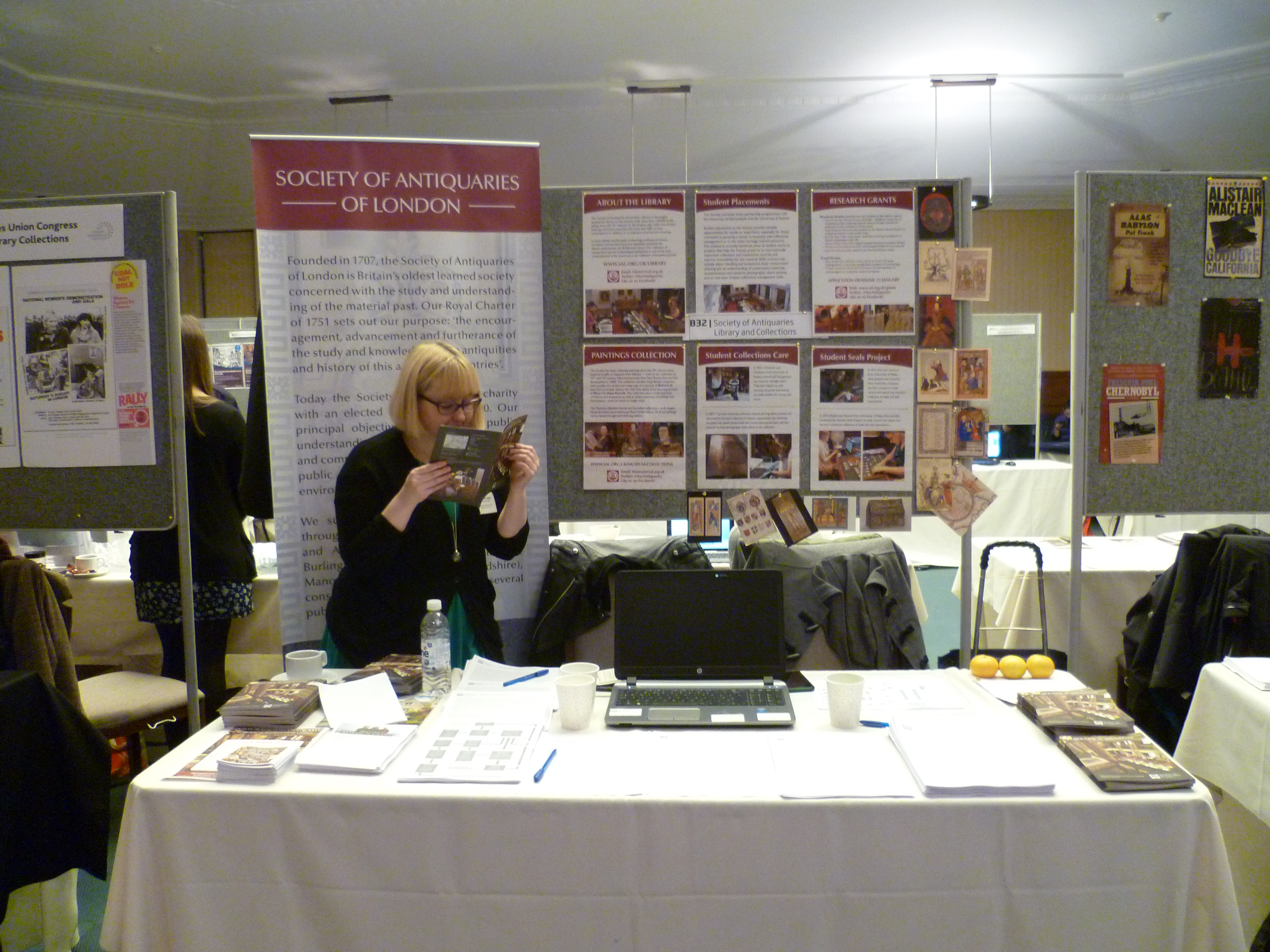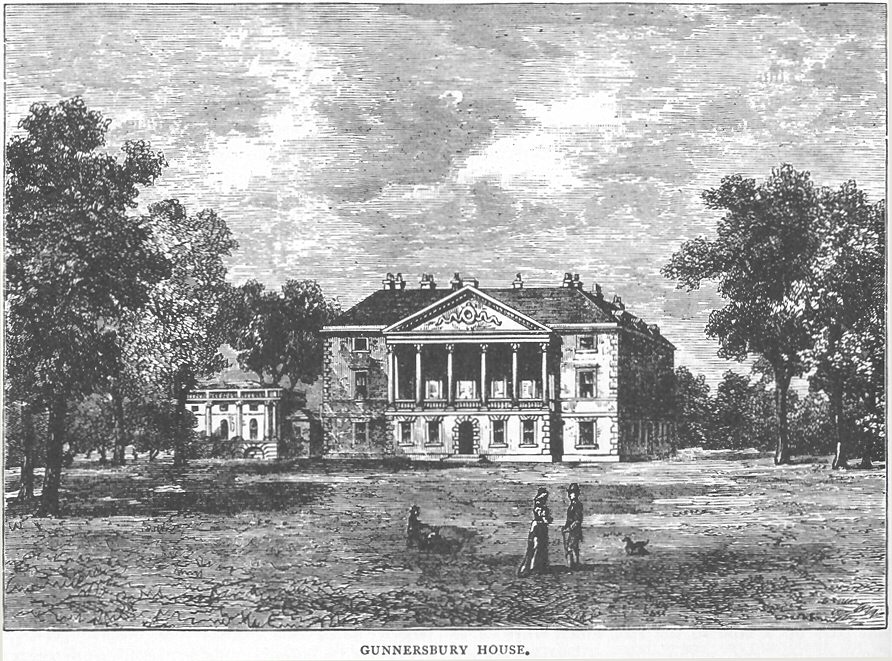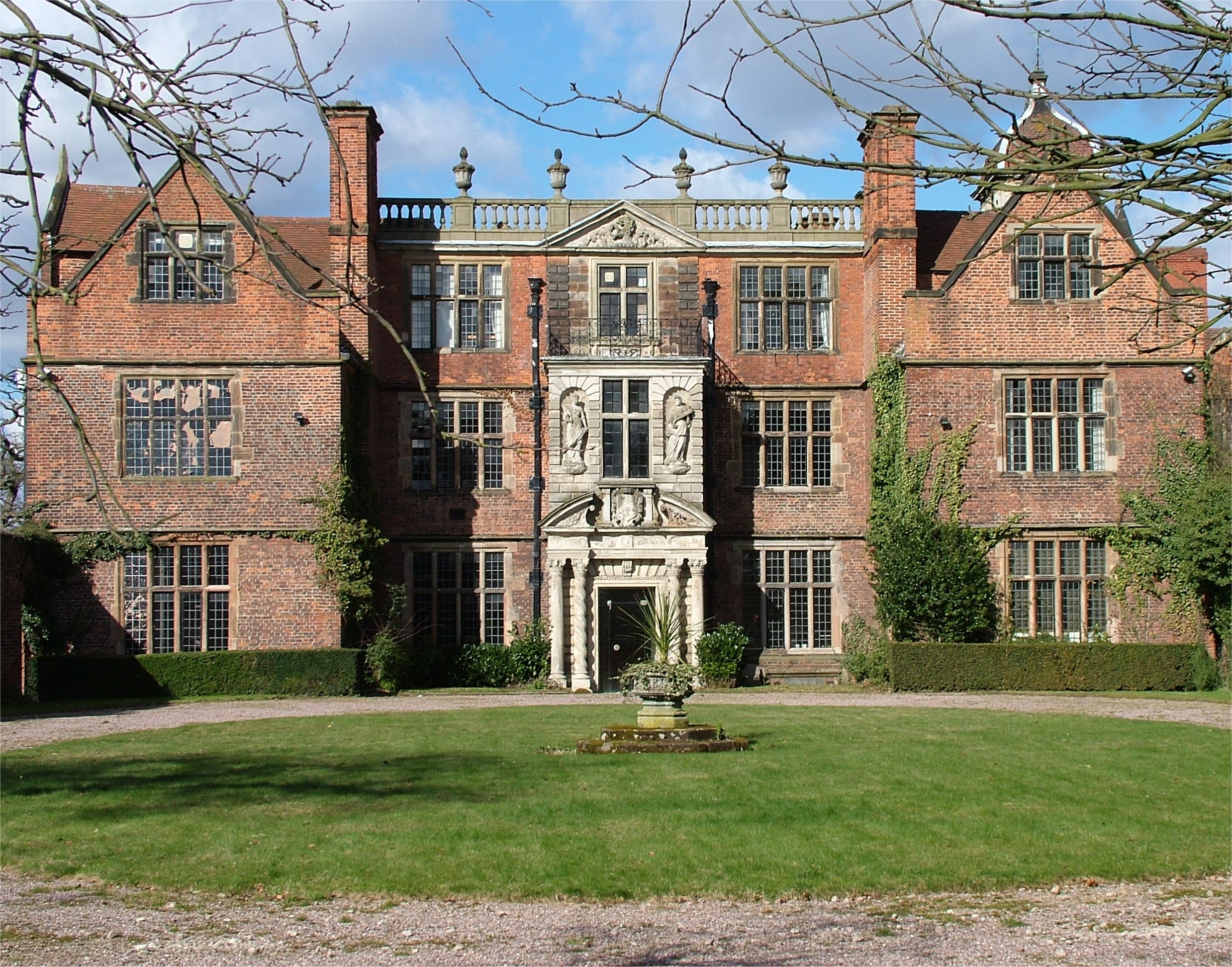|
John Alfred Gotch
John Alfred Gotch (28 September 1852, Kettering, Northamptonshire – 17 January 1942, Kettering, Northamptonshire) was a noted English architect and architectural historian. His brother was the Pre-Raphaelite painter and illustrator Thomas Cooper Gotch, who painted his portrait. Married to Annie Gotch, one of their sons, Roby Myddleton Gotch was killed in action during the First World War aged 26. John Gotch attended Kettering Grammar School and later studied at the University of Zürich and at King's College London. In 1879 Gotch set up a private architectural practice in Kettering which developed into Gotch & Saunders by entering into partnership with Charles Saunders (architect), Charles Saunders in 1887. They were later joined by Henry Ralph Surridge and they jointly retired in 1938. The practice still exists as Gotch, Saunders & Surridge LLP, oGSSArchitecture In Kettering, Gotch was responsible for the design and construction of shoe factories, warehouses, houses, shops, ... [...More Info...] [...Related Items...] OR: [Wikipedia] [Google] [Baidu] |
University Of Zurich
The University of Zurich (UZH, ) is a public university, public research university in Zurich, Switzerland. It is the largest university in Switzerland, with its 28,000 enrolled students. It was founded in 1833 from the existing colleges of theology, law, medicine which go back to 1525, and a new Faculty (division), faculty of philosophy. Currently, the university has seven faculties: Philosophy, Medicine, Human Medicine, Economic Sciences, Law, Mathematics and Natural Sciences, Theology and Veterinary Medicine. The university offers the widest range of subjects and courses of any Swiss higher education institution. History The University of Zurich was founded on April 29, 1833, when the existing colleges of theology, the Carolinum, Zurich, ''Carolinum'' founded by Huldrych Zwingli in 1525, law and medicine were merged with a new faculty of Philosophy. It was the first university in Europe to be founded by the state rather than a monarch or church. Its Latin name is reminiscen ... [...More Info...] [...Related Items...] OR: [Wikipedia] [Google] [Baidu] |
Edwin Lutyens
Sir Edwin Landseer Lutyens ( ; 29 March 1869 – 1 January 1944) was an English architect known for imaginatively adapting traditional architectural styles to the requirements of his era. He designed many English country houses, war memorials and public buildings. In his biography, the writer Christopher Hussey (historian), Christopher Hussey wrote, "In his lifetime (Lutyens) was widely held to be our greatest architect since Christopher Wren, Wren if not, as many maintained, his superior". The architectural historian Gavin Stamp described him as "surely the greatest British architect of the twentieth (or of any other) century". Lutyens played an instrumental role in the construction of New Delhi, which would later on serve as the seat of the Government of India. In recognition of his contribution, New Delhi is also known as "Lutyens' Delhi". In collaboration with Sir Herbert Baker, he was also the main architect of several monuments in New Delhi such as the India Gate; he als ... [...More Info...] [...Related Items...] OR: [Wikipedia] [Google] [Baidu] |
Society Of Antiquaries Of London
The Society of Antiquaries of London (SAL) is a learned society of historians and archaeologists in the United Kingdom. It was founded in 1707, received its royal charter in 1751 and is a Charitable organization, registered charity. It is based at Burlington House in Piccadilly, a building owned by the Government of the United Kingdom, UK government. The modern membership of around 3,300 fellows mostly consists of archaeologists and historians, who can use the post-nominal letters FSA after their names. Membership Fellows (full members) of the society are elected by existing fellows and are entitled to use the post-nominal letters FSA after their names. The election procedure is selective and fellowship is regarded as recognition of significant achievement in the fields of archaeology, antiquities, history or heritage. A nomination must be made by an existing fellow and endorsed by between five and twelve other fellows. A secret ballot of the membership is then held; to be s ... [...More Info...] [...Related Items...] OR: [Wikipedia] [Google] [Baidu] |
Architectural Association
The Architectural Association School of Architecture in London, commonly referred to as the AA, is the oldest private school of architecture in the UK. The AA hosts exhibitions, lectures, symposia and publications. History The Architectural Association was founded in 1847 as an alternative to the practice of training young men via apprenticeship to established architects. Apprenticeships offered no guarantee of educational quality or professional standards, and the system was believed to be "rife with vested interests and open to abuse, dishonesty and incompetence". Two articled pupils, Robert Kerr (1823–1904) and Charles Gray (1827/28–1881), proposed a systematic course of training provided by the students themselves. Following a merger with the Association of Architectural Draughtsmen, the first formal meeting under the name of the Architectural Association took place in May 1847 at Lyons Inn Hall, London. Kerr became the first president (1847–48). From 1859, the ... [...More Info...] [...Related Items...] OR: [Wikipedia] [Google] [Baidu] |
John Webb (architect)
John Webb (1611 – 24 October 1672) was an England, English architect and scholar, who collaborated on some works with Inigo Jones. Life He was born in Little Britain, London, Little Britain, Smithfield, London, and died in Butleigh in Somerset. He had a close association with fellow architect and theatre designer Inigo Jones, for whom he worked as an assistant from 1628.Giles Worsley, ''Inigo Jones and the European Classical Tradition'' (Yale, 2007), p. 177. In the 1640s and 1650s, Jones and Webb jointly designed Wilton House (near Salisbury, England, Salisbury, Wiltshire) with its distinctive Single and Double Cube rooms. Webb's earliest known drawings were made for the Worshipful_Company_of_Barbers#Barber-Surgeons'_Hall_and_Arms, Barber Surgeons' Hall in London in 1636–7, and in 1638 he designed a lodge for John Penruddock at Hale, Hampshire, Hale in Hampshire and stables for a Mr Featherstone, but it is unclear if these were built. At the beginning of the English Ci ... [...More Info...] [...Related Items...] OR: [Wikipedia] [Google] [Baidu] |
Inigo Jones
Inigo Jones (15 July 1573 – 21 June 1652) was an English architect who was the first significant Architecture of England, architect in England in the early modern era and the first to employ Vitruvius, Vitruvian rules of proportion and symmetry in his buildings. As the most notable architect in England, Jones was the first person to introduce the classical architecture of Rome and the Italian Renaissance to England. He left his mark on London by his design of single buildings, such as the Queen's House which is the first building in England designed in a pure classical style, and the Banqueting House, Whitehall, as well as the layout for Covent Garden square which became a model for future developments in the West End. He made major contributions to Scenic design, stage design by his work as a theatrical designer for several dozen masques, most by royal command and many in collaboration with Ben Jonson. Early life and career Beyond that he was born in Smithfield, London, Smit ... [...More Info...] [...Related Items...] OR: [Wikipedia] [Google] [Baidu] |
Margaret Whinney
Margaret Dickens Whinney (4 February 1897 – 1975) was a British art historian who taught at the Courtauld Institute of Art. Her published works included books on British sculpture and architecture. Life Whinney was the daughter of Thomas Bostock Whinney, an architect, and Sydney Margaret Dickens, the granddaughter of Charles Dickens. She was educated at the University of London, graduating in art history in 1935. She had published her first article in 1930, under the supervision of her mentor Tancred Borenius. Immediately after graduating she joined the staff of the recently established Courtauld Institute, where she did a variety of jobs including managing the slide library, and also continued her studies. The Courtauld closed for a year following the beginning of the Second World War. When it reopened in 1940, Whinney was effectively in sole charge, both teaching and handling most of the administrative duties. That year, the research she had done on 17th-century drawin ... [...More Info...] [...Related Items...] OR: [Wikipedia] [Google] [Baidu] |
Courtauld Institute Of Art
The Courtauld Institute of Art (), commonly referred to as The Courtauld, is a self-governing college of the University of London specialising in the study of the history of art and conservation. The art collection is known particularly for its French Impressionist and Post-Impressionist paintings and is housed in the Courtauld Gallery. The Courtauld is based in Somerset House, in the Strand in London. In 2019, the Courtauld's teaching and research activities temporarily relocated to Vernon Square, London, while its Somerset House site underwent a major regeneration project. History The Courtauld was founded in 1932 through the philanthropic efforts of the industrialist and art collector Samuel Courtauld, the diplomat and collector Lord Lee of Fareham, and the art historian Sir Robert Witt. Originally the Courtauld was based in Home House, a townhouse designed by Robert Adam in Portman Square, Marylebone. The Strand block of Somerset House, designed by William Ch ... [...More Info...] [...Related Items...] OR: [Wikipedia] [Google] [Baidu] |
Architects Registration In The United Kingdom
In the United Kingdom, the Architects Act 1997 imposes restrictions on the use of the name, style or title "architect" in connection with a business or a professional practice, and for that purpose requires a statutory Register of Architects to be maintained. The Architects Registration Board constituted under the Act is responsible for Architects Registration in the United Kingdom and is required to publish the current version of the Register annually. Every person who is entitled to be registered under the Act has the right to be entered in the register. The act consolidated previous enactments originating with the Architects (Registration) Act 1931 ( 21 & 22 Geo. 5. c. 33) as amended by the Architects Registration Act 1938. It applies to England, Wales, Scotland and Northern Ireland. Section 2 of the act prescribes that the board shall appoint and regulate the functions ascribed to the Registrar. The Act refers to the Registrar by the masculine pronoun in the singular, but b ... [...More Info...] [...Related Items...] OR: [Wikipedia] [Google] [Baidu] |
Royal Institute Of British Architects
The Royal Institute of British Architects (RIBA) is a professional body for architects primarily in the United Kingdom, but also internationally, founded for the advancement of architecture under its royal charter granted in 1837, three supplemental charters and a new charter granted in 1971. Founded as the Institute of British Architects in London in 1834, the RIBA retains a central London headquarters at 66 Portland Place as well as a network of regional offices. Its members played a leading part in promotion of architectural education in the United Kingdom; the RIBA Library, also established in 1834, is one of the three largest architectural libraries in the world and the largest in Europe. The RIBA also played a prominent role in the development of UK architects' registration bodies. The institute administers some of the oldest architectural awards in the world, including RIBA President's Medals Students Award, the Royal Gold Medal, and the Stirling Prize. It also man ... [...More Info...] [...Related Items...] OR: [Wikipedia] [Google] [Baidu] |
Jacobean Architecture
The Jacobean style is the second phase of Renaissance architecture in England, following the Elizabethan style. It is named after King James VI and I, with whose reign (1603–1625 in England) it is associated. At the start of James's reign, there was little stylistic break in architecture, as Elizabethan trends continued their development. However, his death in 1625 came as a decisive change towards more classical architecture, with Italian influence, was in progress, led by Inigo Jones. The style this began is sometimes called Stuart architecture, or English Baroque (though the latter term may be regarded as starting later). Courtiers continued to build large prodigy houses, even though James spent less time on summer progresses around his realm than Elizabeth had. The influence of Flemish and German Northern Mannerism increased, now often executed by recruited craftsmen and artists, rather than obtained from books as in the previous reign. There continued to be very little b ... [...More Info...] [...Related Items...] OR: [Wikipedia] [Google] [Baidu] |
Elizabethan Architecture
Elizabethan architecture refers to buildings in a local style of Renaissance architecture built during the reign of Queen Elizabeth I of England from 1558 to 1603. The style is very largely confined to secular buildings, especially the large prodigy houses built for the newly-risen nobility close to the court. Many ordinary buildings continued vernacular styles with little decoration. New religious building had ended abruptly at the Dissolution of the Monasteries from . English architecture was late in adopting Renaissance standards compared to the rest of Europe, and in the Elizabethan style northern Europe rather than Italy was the main influence. After Elizabeth a new court culture of pan-European artistic ambition under James I (1603–1625) saw the style morph into Jacobean architecture. Stylistically, Elizabethan architecture is notably pluralistic. It came at the end of insular late Gothic traditions in design and construction called the Perpendicular style in c ... [...More Info...] [...Related Items...] OR: [Wikipedia] [Google] [Baidu] |






